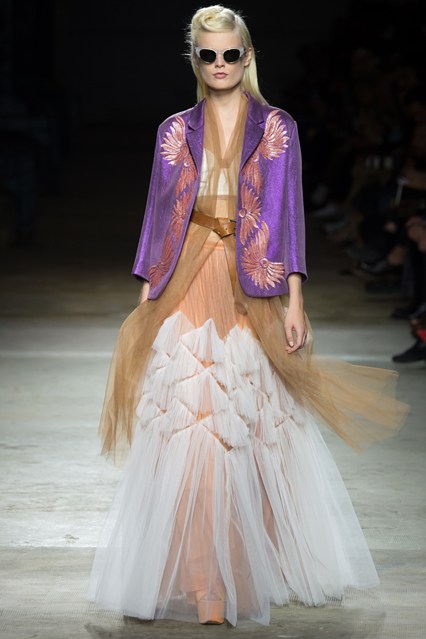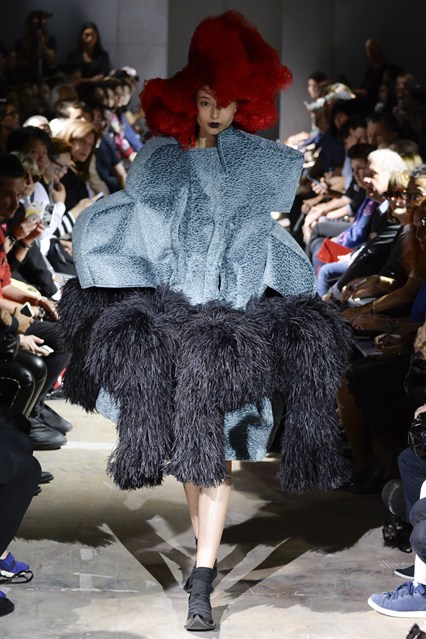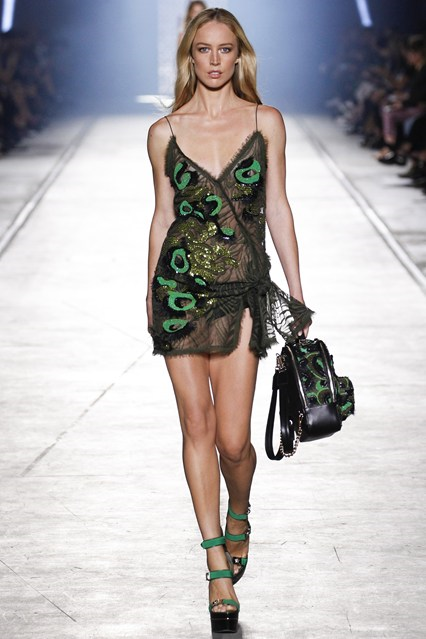photograph by James McKee
Artist Justin Adian titled his recently closed show at Skarstedt Gallery ‘Fort Worth’ after his hometown. The show features Adian’s bold organic paintings created by stretching oil enamel-painted canvases around foam cushions then mounted on wood. Some people would argue that Adian’s work is abstract, and they’d be right most of the time. But Adian also engages in pop culture iconography; one painting references Raymond Pettibon’s infamous Black Flag logo. Adian doesn’t so much mash-up high and low as he does reject high-low as a concept. Good art is good art.
What is a major influence on the show is the Texan town that it is named after. Not only in its referencing of Texan Minimalism but there is a mellow vibe to Adian’s paintings in the show. Looking at them almost strips back your inhibitions and stresses more than they force the viewer to ponder the meanings in their minds. There are references to design and architecture, and it appears like Adian is perfectly fine with his work being seen as something of an interesting object in the background of a space.
On Wednesday night in October, Adian sat down with art historian Alex Kitnick to discuss some of these concepts. What was interesting is that Kitnick, a tried and true art historian, seemed to have difficulty relating to Adian and his huge breadth of pop cultural influences. As a result, the conversation never really took off like it could have. Nevertheless, here are six things we learned about Justin Adian at his discussion of ‘Fort Worth.’
1. He considers his work to be paintings, but they usually start as drawings
“They start as drawings. I think of the final products as paintings, but as the material grows they increase in lines and negative space.”
2. Raymond Pettibon is everything to him, and he loves referencing Pettibon in the work.
“One of the artists that I loved before I ever got into art was Pettibon. I wanted to make an homage to the Black Flag bars but in pink. It’s called ‘Slip it In,’ after my favorite Black Flag record.”
3. He utterly rejects the delineation between high and low art.
“Everything in the work is just stuff that is in my head whether it be minimalism, counter-culture, or music. I’ve never grown out of any of my interests, my interests just grow.”
4. When working for a “White Cube” exhibit, his work comes out a bit more slick than usual.
“These works are pretty slick for me. When it comes to these Chelsea shows I tend to make these slicker and more gentle pieces.”
5. He uses boat paint, as in paint that you use to decorate your boat.
“This is all boat paint, so it’s really shiny. It elicits weirdly northern European commercial colors.”
6. His next show will be far less slick.
“I am working on stuff that will entail much more aggressive gestures, like two panels on a face, so it will be coming out at you and pushing back at the piece.”
Justin Adian's "Fort Worth" has closed, but you can check out images from the exhibition here. Text by Adam Lehrer. Follow Autre on Instagram: @autremagazine











































